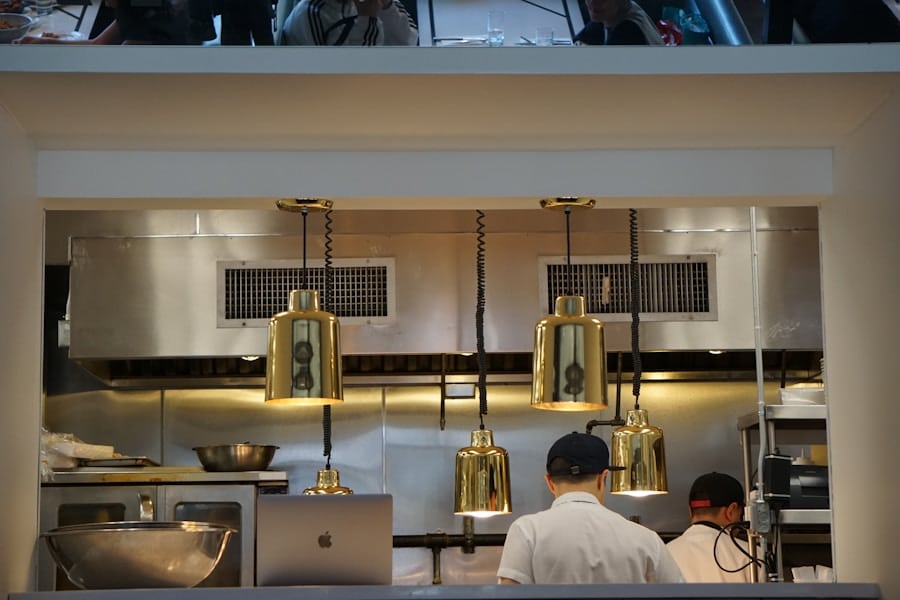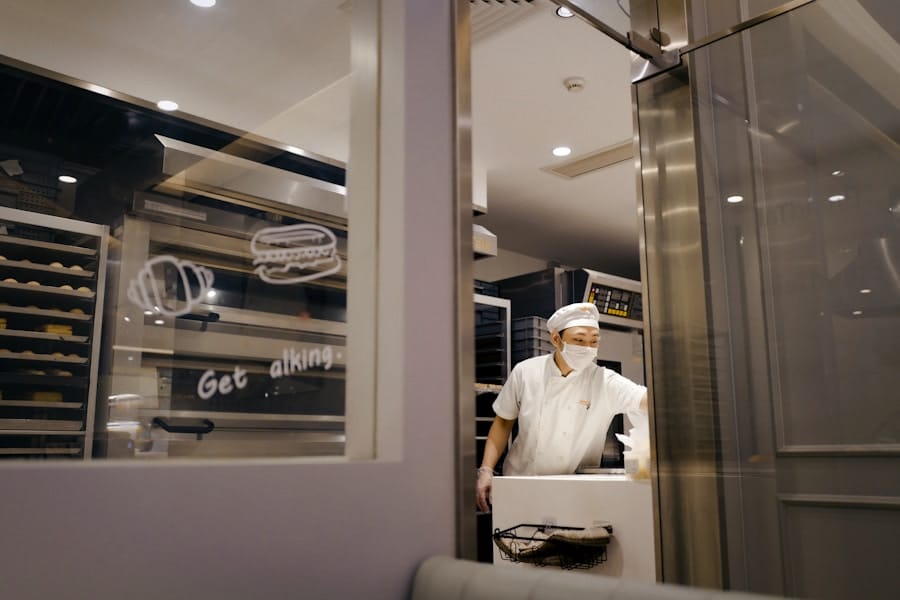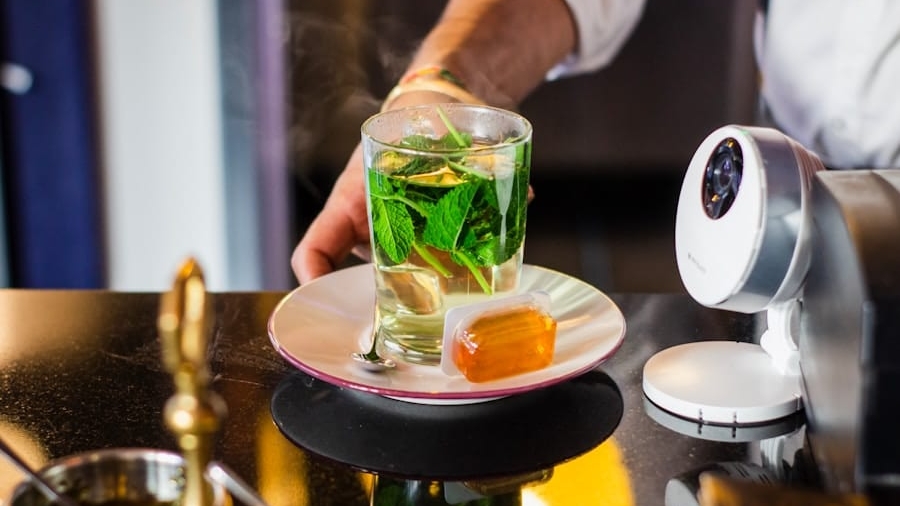The culinary landscape is undergoing a transformative shift with the advent of autonomous robot chefs, a technological innovation that promises to revolutionize the way food is prepared and served. These sophisticated machines are designed to replicate the skills of human chefs, utilizing advanced algorithms, artificial intelligence, and robotics to create culinary masterpieces with precision and efficiency. The concept of robot chefs is not merely a futuristic fantasy; it is becoming a reality in various sectors of the hospitality industry, from high-end restaurants to fast-food chains.
As these robots become more prevalent, they raise intriguing questions about the future of cooking, the role of human chefs, and the overall dining experience. Autonomous robot chefs are equipped with an array of sensors and tools that allow them to perform complex cooking tasks. They can chop, sauté, bake, and even plate dishes with remarkable accuracy.
Some models are capable of learning from their experiences, adapting recipes based on customer preferences or dietary restrictions. This level of adaptability and precision not only enhances the quality of food but also streamlines kitchen operations, reducing the time and labor required for meal preparation. As the technology continues to evolve, the potential applications for autonomous robot chefs expand, promising a new era in culinary arts.
Key Takeaways
- Autonomous robot chefs are revolutionizing the hospitality industry by offering efficient and consistent cooking solutions.
- The advantages of autonomous robot chefs in hospitality include increased productivity, reduced labor costs, and improved food safety and hygiene.
- Challenges and limitations of autonomous robot chefs include high initial investment, limited menu options, and potential job displacement.
- The impact of autonomous robot chefs on the hospitality industry is significant, leading to improved customer experience and operational efficiency.
- Future developments and innovations in autonomous robot chefs are focused on enhancing their capabilities, expanding menu options, and integrating with existing kitchen systems.
Advantages of Autonomous Robot Chefs in Hospitality
One of the most significant advantages of autonomous robot chefs is their ability to maintain consistency in food quality. Unlike human chefs, who may have variations in technique or ingredient handling due to fatigue or personal mood, robot chefs can execute recipes with unwavering precision every time.
For instance, a restaurant chain that employs robot chefs can ensure that each burger or pasta dish tastes identical across all locations, fostering brand loyalty and customer trust. Moreover, autonomous robot chefs can significantly enhance operational efficiency in kitchens. They can work tirelessly without breaks, allowing for continuous food preparation during peak hours.
This capability can lead to reduced wait times for customers and increased table turnover rates for restaurants. In addition, robot chefs can handle repetitive tasks such as chopping vegetables or mixing ingredients, freeing up human staff to focus on more complex culinary creations or customer service. This division of labor not only optimizes kitchen workflows but also allows human chefs to engage in more creative aspects of cooking, potentially leading to innovative menu items.
Challenges and Limitations of Autonomous Robot Chefs

Despite their numerous advantages, autonomous robot chefs face several challenges and limitations that must be addressed for widespread adoption in the hospitality industry. One primary concern is the initial investment cost associated with acquiring and maintaining these advanced machines. High-quality robot chefs can be prohibitively expensive for small businesses or startups, creating a barrier to entry that may limit their implementation in diverse culinary settings.
Additionally, ongoing maintenance and software updates can incur further costs, making it essential for businesses to weigh the long-term financial implications against potential benefits. Another significant challenge lies in the complexity of human culinary skills that are difficult to replicate through automation. While robot chefs excel at executing precise tasks, they often lack the intuition and creativity that human chefs bring to the kitchen.
Cooking is not merely a mechanical process; it involves understanding flavors, textures, and presentation nuances that can elevate a dish from ordinary to extraordinary. For example, a seasoned chef may instinctively know when to adjust seasoning based on taste or how to balance flavors in a way that a robot may not be programmed to achieve. This limitation raises questions about whether autonomous robots can truly replace human creativity in culinary arts.
Impact on the Hospitality Industry
The introduction of autonomous robot chefs is poised to have a profound impact on the hospitality industry as a whole. As these technologies become more integrated into restaurant operations, they could lead to significant changes in workforce dynamics. While some may argue that robot chefs threaten job security for human cooks, others contend that they will create new opportunities for skilled workers who can manage and maintain these advanced systems.
The need for technicians who specialize in robotics and AI will likely increase, leading to a shift in the types of skills that are valued in the culinary workforce. Furthermore, the presence of robot chefs could alter customer perceptions and expectations regarding dining experiences. As diners become accustomed to seeing robots in action, they may begin to view them as an integral part of the culinary experience rather than mere tools for efficiency.
This shift could lead to new dining concepts where customers interact with robots during meal preparation or even participate in cooking alongside them. Such experiences could enhance customer engagement and create unique marketing opportunities for restaurants looking to differentiate themselves in a competitive market.
Future Developments and Innovations in Autonomous Robot Chefs
The future of autonomous robot chefs is ripe with potential developments and innovations that could further enhance their capabilities and applications within the hospitality industry. One area of focus is the integration of machine learning algorithms that allow robot chefs to learn from customer feedback and adapt their cooking techniques accordingly. For instance, if a particular dish receives consistent praise or criticism from diners, a robot chef could adjust its recipe or presentation style based on this input, creating a more personalized dining experience.
Additionally, advancements in sensory technology could enable robot chefs to better understand and replicate complex flavor profiles. By incorporating taste sensors that mimic human taste buds, these robots could analyze ingredients and make real-time adjustments during cooking processes. This level of sophistication would not only improve food quality but also allow for greater experimentation with flavors and textures, pushing the boundaries of traditional cooking methods.
Integration of Autonomous Robot Chefs with Human Chefs

The integration of autonomous robot chefs with human chefs presents an exciting opportunity for collaboration rather than competition within the culinary world. Rather than viewing robots as replacements for human talent, many industry experts advocate for a symbiotic relationship where both can coexist and complement each other’s strengths. Human chefs possess creativity, intuition, and emotional intelligence—qualities that are essential for crafting unique dishes and connecting with customers on a personal level.
In practice, this integration could manifest in various ways. For example, human chefs could focus on developing innovative recipes while delegating repetitive tasks such as ingredient preparation or cooking basic components to robot chefs. This division of labor would allow human chefs to spend more time experimenting with new flavors or techniques while ensuring that essential tasks are completed efficiently.
Furthermore, collaborative cooking experiences could emerge where diners witness both human creativity and robotic precision in action, enhancing the overall dining experience.
Ethical and Social Implications of Autonomous Robot Chefs
The rise of autonomous robot chefs also brings forth ethical and social implications that warrant careful consideration. One pressing concern is the potential displacement of workers within the hospitality industry. As restaurants increasingly adopt automation technologies, there is a risk that jobs traditionally held by human cooks may become obsolete.
This shift raises questions about how society will address workforce transitions and support those affected by job loss due to automation. Moreover, there are ethical considerations surrounding food safety and quality control when relying on machines for food preparation.
For instance, if a malfunction occurs during food preparation, it could lead to health risks for consumers if not addressed promptly. Ensuring robust safety measures and regulatory frameworks will be essential as autonomous robot chefs become more prevalent in commercial kitchens.
The Role of Autonomous Robot Chefs in the Future of Hospitality
As we look toward the future of hospitality, autonomous robot chefs are poised to play an increasingly significant role in shaping culinary practices and dining experiences. Their ability to deliver consistent quality and enhance operational efficiency presents compelling advantages for restaurants seeking to thrive in a competitive landscape. However, it is crucial to navigate the challenges associated with automation thoughtfully—balancing technological advancements with the irreplaceable qualities that human chefs bring to the table.
The integration of autonomous robot chefs into kitchens does not signify an end to human creativity but rather an evolution of culinary arts where collaboration between humans and machines can lead to unprecedented innovations. As we embrace this new era of cooking technology, it will be essential to address ethical considerations and workforce implications proactively, ensuring that the hospitality industry remains inclusive and adaptable in the face of change. Ultimately, autonomous robot chefs have the potential not only to redefine how we prepare food but also how we experience it—creating a future where technology enhances rather than diminishes our connection to culinary traditions and artistry.
In addition to the exciting advancements in autonomous robot chefs in hospitality, technology is also revolutionizing the way we stay stylish with Wear OS by Google. This article explores the latest trends in wearable technology and how it can enhance our daily lives. To learn more about staying fashionable and connected with Wear OS, check out this article.
FAQs
What are autonomous robot chefs?
Autonomous robot chefs are advanced robotic systems equipped with artificial intelligence and machine learning capabilities that enable them to perform cooking tasks without human intervention.
How do autonomous robot chefs work?
Autonomous robot chefs use sensors, cameras, and other technologies to perceive their environment and interact with kitchen equipment. They can follow recipes, adjust cooking parameters, and even plate dishes with minimal human oversight.
What are the potential benefits of using autonomous robot chefs in hospitality?
The use of autonomous robot chefs in hospitality can lead to increased efficiency, consistency in food preparation, reduced labor costs, and improved kitchen safety. They can also help address labor shortages and enhance the overall dining experience for guests.
What are the challenges associated with implementing autonomous robot chefs in hospitality?
Challenges include the high initial cost of acquiring and implementing the technology, potential resistance from kitchen staff, and the need for ongoing maintenance and technical support. Additionally, ensuring that the robot chefs meet food safety and quality standards is crucial.
What is the future outlook for autonomous robot chefs in hospitality?
The future of autonomous robot chefs in hospitality looks promising, with ongoing advancements in robotics and AI. As the technology becomes more affordable and reliable, it is likely to become more prevalent in commercial kitchens, offering new opportunities for innovation and efficiency in the food service industry.

